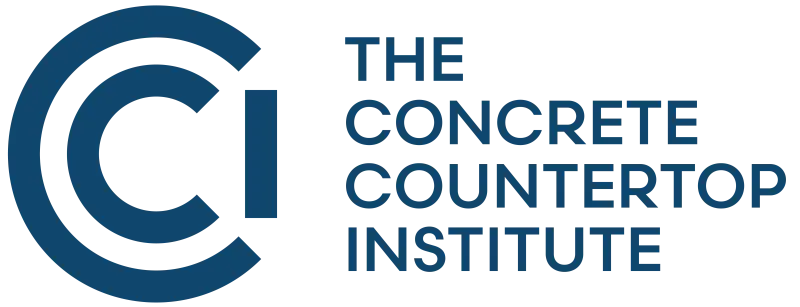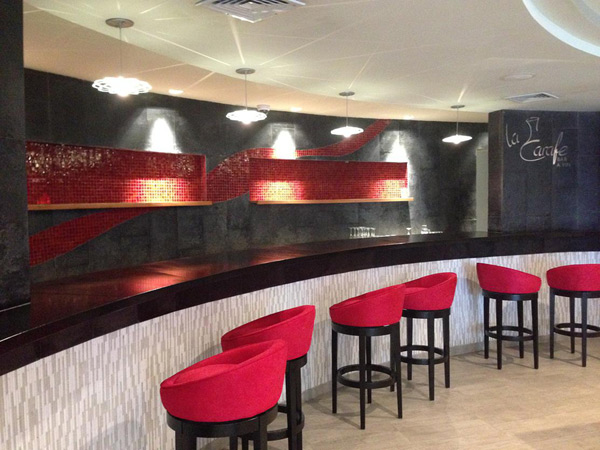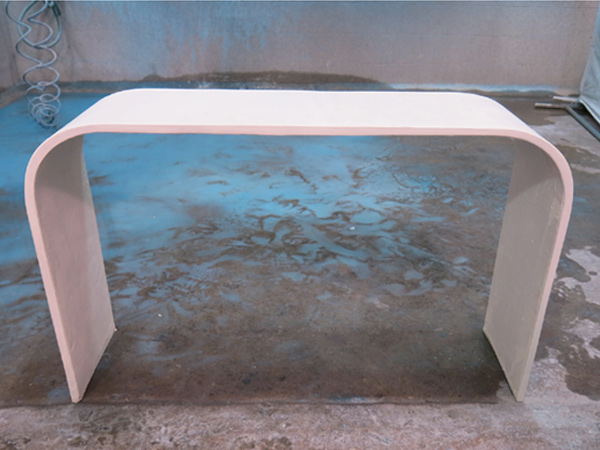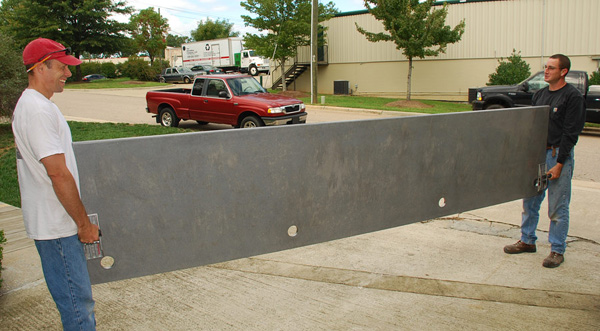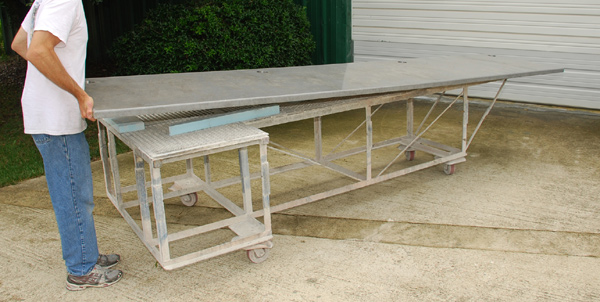I’ve published a lot of articles about GFRC, now it’s time to bring together in one place all the advantages that GFRC offers.
Do you want to learn how to make concrete countertops using GFRC?
We offer a variety of hands-on GFRC Training and video GFRC training.
1. It’s lighter.
Because GFRC can be made 1/2 the thickness of traditional precast, it is automatically 1/2 the weight. And, because GFRC does not use stone or as much sand, which are denser and heavier than cement, the weight savings is even greater.
Precast is typically made 1.5″ thick and weighs 18 pounds per square foot. (Granite countertops are usually about 19 pounds per square foot.) 3/4″ thick GFRC weighs 8 pounds per square foot.
An 8′ x 25″ panel of precast would weigh 300 pounds, whereas a GFRC panel of the same size would weigh 133 pounds. Put another way, you could make an 18′ x 25″ panel that weighs only 300 pounds.
Here’s a concrete bartop that includes at 16-foot long panel:
2. It’s thinner.
The effective minimum thickness for precast is 1.5″ because of the strength and the steel reinforcing required. GFRC’s practical limit is only about 1/4″.
3. You can make larger pieces with fewer seams.
Instead of breaking a kitchen up into 8 foot long slabs that each weigh about 300 lbs, with GFRC you can make the slabs as long as possible.
Most kitchens don’t have sections of more than 20 feet. The only limiting factor is whether the slabs have to be carried around any corners or up stairs.
4. Fewer people are needed to handle slabs.
Two strong men can handle a 300 pound slab. Not so when you approach 500 or more pounds.
Imagine trying to install an 18-foot long precast panel. At 675 pounds, you would need either special equipment or 5 or more people to handle the load, at risk to their backs and their safety.
GFRC reduces the number of employees and the labor costs needed for your business.
5. It allows faster turnaround.
Because GFRC has high early strength, in part provided by the fibers, it can be demolded quickly. Most GFRC projects can be demolded in 24 hours. In general, traditional precast projects should stay in the molds at least a couple of days.
Faster turnaround means you can do more projects and bring in more revenue.
6. There’s less need for large steel casting tables.
Because GFRC is light and fast, most projects can be cast on more modest tables that simply need to be flat and level and reasonably strong.
With precast, a much larger proportion of projects reach the weight that requires very strong steel casting tables.
Many established GFRC pros have large steel casting tables, but those just starting out can complete most projects without the need to invest in such a table.
7. There’s less likelihood of cracking.
Because of GFRC’s strength and toughness, it can take a lot more abuse before it cracks. GFRC can even bend!
8. No separate reinforcing is needed.
For most projects, the GFRC itself provides all the reinforcement needed, via the AR glass fibers in the backer coat.
Some applications require the addition of AR glass scrim, but this is thin and easy to place between layers of backer.
9. No vibration is required.
Achieving a pinhole-free surface is easy with GFRC. By spraying the mist coat, you automatically impart enough energy to drive out any air bubbles.

If you can build the mold for it, you can make it out of GFRC.
Even shapes that seem difficult because of the spraying angle can be created by clever assembly of the mold. For this table base, I created 2 molds, sprayed each, then brought them together before hand applying backer.
GFRC provides many advantages to creative concrete professionals, allowing them to be more creative and ultimately be more successful in their businesses.
